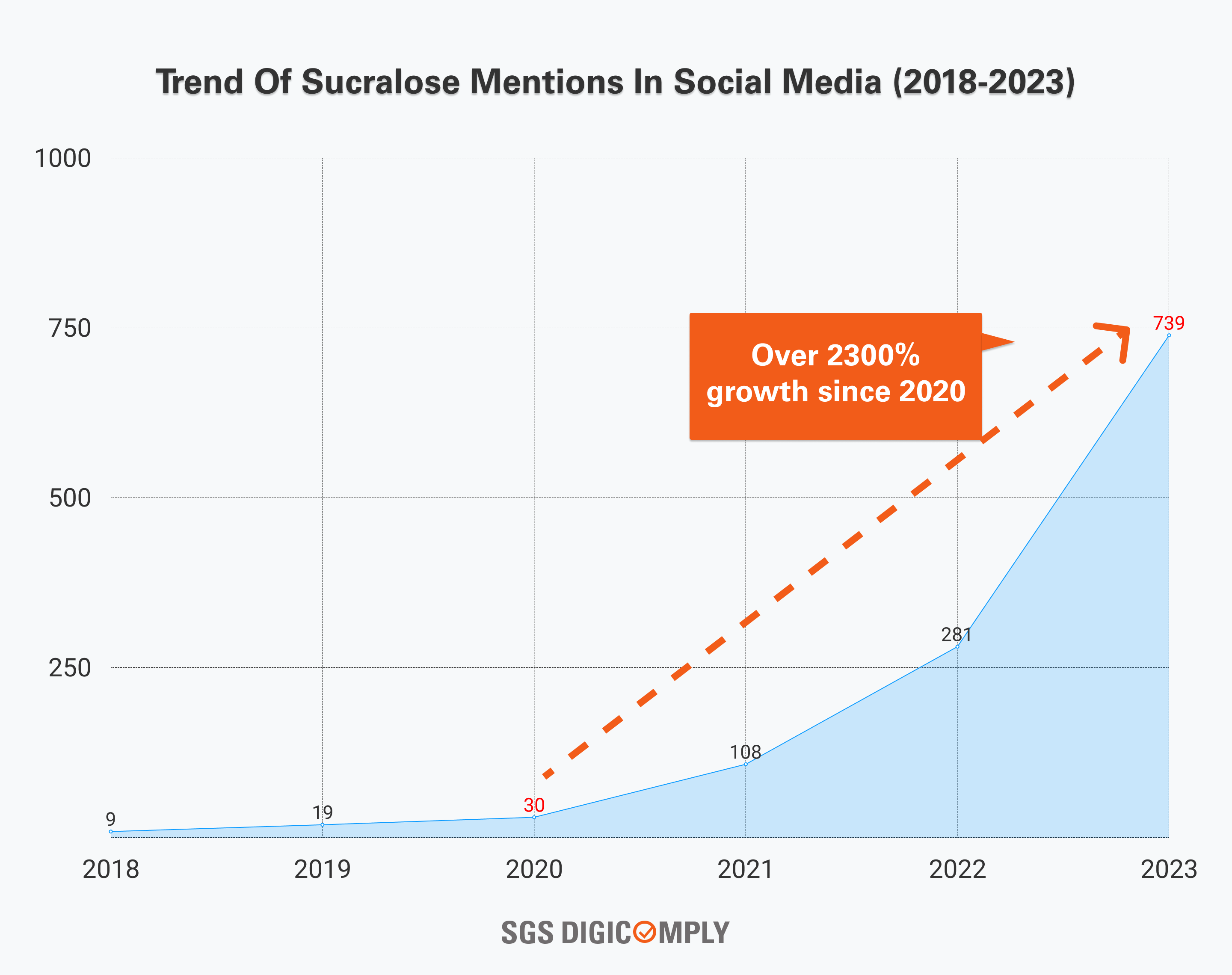Artificial sweeteners have become a pervasive part of modern diets, aiming to provide a low-calorie alternative to sugar. Sucralose, a commonly used artificial sweetener, has sparked debates concerning its safety and potential health effects. Understanding the risks associated with sucralose and comprehending consumption trends in artificial sweeteners is essential for informed decision-making about dietary choices.
What is Sucralose?
Sucralose, an artificial sweetener discovered in 1976, is a chlorinated derivative of sucrose. Marketed under brand names like Splenda, it offers sweetness without the calories found in sugar. It is extensively used in various food and beverage products, including baked goods, soft drinks, dairy, and more, contributing to its widespread consumption.
Health Effects of Sucralose: Debunking Myths and Valid Concerns
1. Weight Management and Metabolic Effects
One of the primary reasons for using sucralose is its low-calorie nature. However, studies examining its impact on weight management yield mixed results. While some suggest that artificial sweeteners may help reduce caloric intake, others indicate a potential association with weight gain due to disrupted metabolic responses.
2. Impact on Blood Sugar and Insulin Levels
Sucralose does not significantly affect blood sugar levels, making it appealing for individuals with diabetes or those seeking to manage glucose intake. Nonetheless, concerns have arisen regarding its influence on insulin response. Some studies suggest that artificial sweeteners might alter insulin sensitivity, though conclusive evidence remains elusive.
3. Gut Microbiota and Digestive Health
Emerging research has probed the connection between artificial sweeteners and gut microbiota. Studies suggest that sucralose might negatively impact gut bacteria composition, potentially influencing metabolic processes and overall digestive health. However, more research is required to fully elucidate these effects.
4. Safety Profile and Regulatory Approval
Regulatory agencies worldwide, including the FDA and EFSA, have approved sucralose as safe for consumption within recommended limits. However, ongoing research aims to continuously assess its safety profile, considering long-term effects and potential risks associated with excessive intake.
Consumer Trends and Considerations
1. Shift towards Health-Conscious Choices
In recent years, heightened awareness of health and wellness has prompted consumers to seek alternatives to sugar-laden products. This shift has led to increased consumption of artificial sweeteners, including sucralose, in various food and beverage categories.
2. Label Transparency and Consumer Awareness
Consumers are becoming more conscientious about label reading, demanding transparency from food manufacturers. The quest for understanding ingredients and their potential health implications has fueled discussions about the use of artificial sweeteners like sucralose.
3. Balancing Taste Preferences and Health Concerns
The challenge lies in striking a balance between satisfying taste preferences and addressing health concerns. While artificial sweeteners offer sweetness without the caloric load, concerns regarding their potential health effects prompt individuals to reconsider their consumption patterns.
SGS DIGICOMPLY INSIGHTS: Analysis of Incidents Related to Sucralose Over the Last 10 Years
Utilizing SGS Digicomply for horizon monitoring, we can deduce that Sucralose does indeed exhibit a relatively safe profile. The incident trend remains consistently low, showing no indications of an upward surge.

While this realm still necessitates further scientific exploration, there is presently no cause for concern.
As mentioned earlier, in recent years, there has been a significant increase in discussions surrounding sucralose. If we examine the SGS Digicomply chart depicting the mentions of sucralose on social media, we observe a substantial spike.

In 2020, the figure stood at 30 mentions, but by 2023, it had surged to 739 mentions per year, representing a growth of more than 2300%. This notable rise warrants attention from manufacturers and companies within the sucralose supply chain to explore new opportunities, understand consumer sentiments, and seek competitive advantages amid this heightened activity.
Nevertheless, we remain vigilant by monitoring the situation through SGS Digicomply - the All-in-one Food Safety & Regulatory Compliance platform, and we strongly advise you to do the same. Explore SGS Digicomply platform now.
Conclusion
Sucralose and other artificial sweeteners remain a subject of considerable debate in the realms of nutrition, health, and regulatory oversight. Understanding the nuanced health effects and consumption trends associated with these additives is crucial for consumers to make informed dietary choices. Ongoing scientific research and regulatory scrutiny are essential to unravel the complexities surrounding artificial sweeteners and their potential impact on human health.





.webp?width=1644&height=1254&name=Food%20Safety%20Dashboard%201%20(1).webp)
